Interview with Ruth Mateus-Berr
- ECOWEEK bLOG
- Aug 28, 2018
- 9 min read
Award-winning artist, researcher and social designer RUTH MATEUS-BERR from Austria will join ECOWEEK 2018 in Middle East as a speaker and workshop leader! "What about designing a (shopping) mall as public space for various desires and needs of the local population? We will identify the mall as public space, in possession of the citizens (if just for one day)" says Ruth. Join Ruth at ECOWEEK - Early registration open: http://ecoweek.co.il/

Give us some background on you and your work (studies, past experience, highlights of your career, prizes, recent competitions, etc.).
Ruth Mateus-Berr, artist, researcher, and social designer, graduated from the Department of Art, Sciences and Art Education at the University of Applied Arts Vienna. She has realized several core projects for the Austrian Design Institute and is professor, head of expertise of DESIGN at the Department of Social Design, and chairwoman of the senate at the University of Applied Arts Vienna. In her awarded works she focuses on water as important resource for the development of a peaceful society: 4 Layers of Sari (2007) or reduction of carbon dioxide: Cool city Vienna. Empathy for Climate Hangovers in a City (2010, 2012), art & health projects (Bank Austria Social Award 2014, Occursus 2016, eAward Austria 2017), projects against racism. She founded the Applied Design Thinking LAB Vienna 2009, where she engages in interdisciplinary design education. Here within she has been supervising interdisciplinary and participatory urbanistic projects. 2016 she was initiator and co-founder of the Politics of Fear collective: https://pofcollective.wordpress.com/ where fears and courage within our society are negotiated at public spaces. She external evaluator of EU Program P7, Marie Curie Multi-ITN project TRADERS (short for ‘Training Art and Design Researchers in Participation for Public Space’): http://tr-aders.eu/ and member of the scientific committee of the Design Management Academy Conference/Research Perspectives on creative intersections 2017 in Hongkong.
Ruth Mateus-Berr lives and works in Vienna, Austria: http://www.ruth-mateus.at/arts/
Prizes and awards (15 Awards & Calls)
Ø 2017 eAward, granted by the Federal Chancellery, platform digital Austria and publisher REPORT: http://www.report.at/component/k2/item/90225-eaward-2017-kategorie-bildung-und-gesundheit
Ø 2016 „personal.curator“ - Context sensitive guiding. Visitors receive context-based knowledge depending on their position and availability of content. Via latest iBeacon technology, GPS, or simply by a numpad. For context sensitive storytelling and a personal guidance through the exhibition. & fluxguide: http://www.fluxguide.com/website/en/home & MAK (Museum of Applied Arts Vienna: http://www.mak.at/vermittlung/vermittlungsprojekte) & whatchado GmbH:https://www.whatchado.com/en/ (Vienna Business Agency: https://viennabusinessagency.at/)
Ø 2016 Occursus: Award for communication in oncology: https://www.occursus.at/die-preistraeger/
Ø 2015 D.A.S. Dementia. Arts. Society. “Artistic Research on Patterns of Perception and Action in the Context of an Aging Society” PEEK (FWF) University of Applied Arts Vienna: https://www.dementiaartssociety.com/en/
Ø 2014 Bank Austria Social Award (& Interacct Research Group- 2.place)
Ø 2014 Break the Walls PEEK (FWF) University of Applied Arts Vienna & University of Technology Vienna & University of Music: http://www.piglab.org/breakingthewall/
Ø 2014 Sparkling Games Sparkling Science (bmwfw) University of Applied Arts Vienna & University of Technology Vienna: http://www.piglab.org/sparklinggames-de/
Ø 2013 Best Oral Presentation Award (International Textiles and Costumes Congress, Kasetsart University Thailand, Bangkok)
Ø 2013 Art Lector is a transmedial technical solution for customized art and culture education for groups of students from schools, young and elderly visitors and people with special needs in museums & fluxguide (ZIT: Technology Agency of the City of Vienna: http://www.zit.co.at/en.html). http://www.fluxguide.com/artlector/de
Ø 2012 INTERACCT: INTegrating Entertainment and Reaction Assessment into Child Cancer Therapy & University of Vienna, St. Anna Children Cancer Research Center Institute, T-Systems (FFG: The Austrian Research Promotion Agency: https://www.ffg.at/en) http://interacct.at/project/english.aspx
Ø 2012 Visuality & Mathematics: Experiential Education of Mathematics through Visual Arts, Sciences and Playful Activities & Universities in Finnland, Hungary, Serbia and Belgium (EU-Tempus: http://eacea.ec.europa.eu/tempus/index_en.php) http://vismath.ektf.hu/
Ø 2010 Design/Architecture Award: Vienna: A Design Strategy. How to React to a City? (MAK, Departure Call) Cool City Vienna: Cool Design & Hashem Akbari & Allgemeine Baugesellschaft - A. PORR AG. & Architect Michael P. Schultes: MAK (Museum of applied arts) Vienna Ø 2010: http://www.architekturwettbewerb.at/competition.php?id=641&cid=458
Ø 2009 Communication Lab & Science Center Netzwerk (WWTF: The Vienna Science and Technology Fund WWTF. http://www.wwtf.at/) 2007 Neptun Contemporary Art Award for the Visualization of the Science Work of Dr. Rita Colwell (Verbund)
Ø 2007 Haptic and olfactory Design for Viennas Creative Industries & University of Vienna, University of Natural Resources and Applied Life Sciences Vienna (WWTF: The Vienna Science and Technology Fund WWTF.http://www.wwtf.at/)
Tell us briefly on your approach to sustainability / sustainable design and how it manifests it in your work (you are welcome to present a specific project).
In her awarded works Ruth Mateus-Berr focuses on water as important resource for the development of a peaceful society: 4 Layers of Sari (2007) or reduction of carbon dioxide: Cool city Vienna. Empathy for Climate Hangovers in a City (2010, 2012), art & health projects (Bank Austria Social Award 2014, Occursus 2016, eAward Austria 2017), projects against racism. She founded the Applied Design Thinking LAB Vienna 2009, where she engages in interdisciplinary design education. Here within she has been supervising interdisciplinary and participatory urbanistic projects. 2016 she was initiator and co-founder of the Politics of Fear collective: https://pofcollective.wordpress.com/ where fears and courage within our society are negotiated at public spaces.
Sustainability means to me to engage in processes which meet the needs of today and future generations, not only in areas we live in but also in areas where people have less ability to take care of it, mainly engaged in survival.
Victor Papanek (1970) desired a “Social Turn”. He compared design and medical profession by imagining all doctors would mainly concentrate on “plastic surgery and cosmetics” and was concerned about the fact that most of the designers were not interested “to the social and human dimensions in design”. That´s we have to move at, the social and human dimensions of design. He also claimed for six design priorities:
Design for the Third World (2009, 235)
Design of teaching and learning medias for people with disabilities (2009, 241)
Design for medicine, surgery, dentistry and hospital equipment (2009, 242)
Design for experimental research (2009, 243)
Design of systems for human life protection under extreme conditions (2009, 245)
Design for fundamentally new concepts (2009, 245)
For Example: Politics of Fear
Title: Politics of Fear (PoF) Collective
Team: Jana Alaraj, Laschandré Coetzee, Martin Färber, Brigitte Felderer, Michel Gölz, Violet Dahyun Kim, Sebastian Kraner, Hana Krizanova, Lena Kohlmayr, Tinka Legvart, Virginia Lui, Eva Maria Mair, Susanne Mariacher, Ruth Mateus-Berr, Peter Oroszlany, Karolína Plášková, Nathalia da Silva Portella, Milly Reid, Christina Schraml, Alessia Scuderi, Enrico Tomassini,Que Chi Trinh, Maria Tsaneva
Short description
Since 2015 the Politics of Fear* (PoF) Collective has been realizing variousparticipatory interventions in public space. The objective is to investigate the media’s role in the construction of fear and to negotiate and visualize the fears and hopes of people through artistic means, in order to challenge right-wing supremacy and their tactical play with people’s concerns for the future.
Long description
The PoF Collective was initiated through a seminar at the Social design studio by Ruth Mateus-Berr, Martin Färber and Christina Schraml and founded in 2015 by students and members of the teaching staff from the Social Design department at the University of Applied Arts. It engages in a series of projects and actions in public space which reveal that we do not have to be afraid of our fears.
Since the first action at Vienna’s Augarten in May 2016, members of the collective have been acting as ambassadors throughout Austria and internationally. In summer 2016 the project was selected to be exhibited at the “Participatory Design Conference” in Aarhus in Denmark, where PoFprovoked a humorous, small scare by secretly spreading fear inspection cards,reminiscent of the U.S. American “Notice of Baggage Inspection”, into the pockets of conference’ participants. PoF followed an invitation for a two-days intervention at the Hebert-Bayer-Platz in Linz in September 2016, which was realized in close collaboration with the OÖ Gesellschaft für Kulturpolitik (gfk)and the afo architekturforum oberösterreich. In November 2016, PoF had the chance to present interim results of their ongoing artistic research at twointernational conferences at the Royal College of Art in London (“Mediations – Art & Design Agency and Participation in Public Space”) and at CUMULUS “Design for E-very-thing” conference at the Hong Kong Design Institute. In February 2017, PoF participated with the workshop “Courage for Democracy!” at the TRADERS Open School in Hasselt. Most recently, PoF has addressed the dialectic of fear and courage with the exhibition NO HOPE NO FEAR at KUNST HAUS WIEN.
*PoF Collective is named after the book Politics of Fear by the Austrian sociolinguist Ruth Wodak, in which she analyses the strategies employed by right-wing populist parties and shows how they seek to foment fear through the deliberate use of disinformation, falsehoods and fantasised threats.
For Example: 4 layers of sari

2007 the artist received a contemporary art award for her project 4 layers of sari, which was developed further since then. Her students asked her to co-laborate. Since 2012 they started to work on the topic: “4 layers of sari”, which is a scientific result of the microbiologist Rita Colwell and her team (Colwell 2003) to reduce 99% of the pathogens of cholera, the Vibrio Cholerae. The Lab covers a broad range of problem domains from pattern making to fashion for buildings with inflatable membranes. Recent experiments reveal new perspectives for fashion and, additionally, bring up educationally fruitful methods for working with mathematical topics using a creative base. Interim results are presented through performative lectures at international conferences. Art and design based research is biased scientifically and applied practically at once. Developed innovative tools may be transferred in the fields of educational subjects (schools and universities), interdisciplinary applied in technologies or unto the fields of the creative industries.
For Example: Cool City: 2010 Design Award: Vienna: A Design Strategy. How to React to a City? (MAK, Departure Call) Cool City Vienna COOL CITY VIENNA. EMPATHY FOR CLIMATE-HANGOVERS IN A CITY
The exhibition in the MAK DESIGN SPACE is presenting the winners of “Project Vienna—A Design Strategy. How to React to a City?”, the competition of ideas held jointly by MAK & departure. More than a hundred submissions came in from twenty countries.
Steven Chu, Minister of Energy at the cabinet of the US government Energieminister encouraged at a Symposium in London to paint streets, pavements and roofs white in order to counteract global warming. This idea was biased on a research done by Prof. Hashem Akbari (Lawrence Berkeley National Laboratory), one of the leading climate researcher of the USA, consultant for the EU. He calculated that each 20 m2 white or COOL* designed horizontal surface in Vienna would provoke a reduction of 1 Ton of CO2. Aim should be to receive reflected radiation of 10%. If 100 big cities of the world would receive bright surfaces, the worlsd would receive a time to breath and reduce CO2. The artist invited Hashem Akbari in this project.
For Example: AGEISM
Familiar and foreign (PUBLIC) SPACES
PUBLIC DRAWING
Ruth Mateus-Berr
New analysis by the WHO (World Health Organisation) shows that negative attitudes towards older people are widespread and ageism is extremely common. By 2025 the number of people aged 60 and over will double, and by 2050 will reach 2 billion globally, with the vast majority of older people living in low and middle-income countries. Some 10 Million people in Europe are suffering from dementia. By the year 2050 the number of people with dementia is estimated to double. People with dementia suffer from societal stigmatization. Common tasks like shopping, financial agendas and traveling to unknown places can be difficult for them. To avoid rejection and embarrassment they seclude themselves from society. This project aims to facilitate empathy and a language of sensitivities for people with dementia. We all have experiences with confusion and order, feeling familiar and foreign …
METHOD, LOCATION:
Public Drawing with chalks will document images of confusion and order and discuss the topic "orientation“. Vlado Micenko, double-bass, interpreted live the notations on the floor.
What attracted you to join ECOWEEK? Have you participated to ECOWEEK workshops in the past? Would you consider joining ECOWEEK workshops again in the future?
I am attracted in Ecoweeks´ engagement to encourage the youth to engage in global goals. Teaching and learning design in times of change requires entirely new perspectives. Since the onset of the educational turn, we find that knowledge, competences and skills have become fragmentary. Knowledge has become extremely complex and seems to be understandable just via transdisciplinary approaches. I hope that many students from diverse disciplinary backgrounds apply.
What is the theme of your planned ECOWEEK workshop? What do you plan to do? What is the approach that you bring to the workshop? Who are the members of your team? What are your expectations of the workshop?
WORKSHOP ECOWEEK
Israel, September 02-07, 2017.
W3 THEME: Interventions at Dizengoff Center, Tel Aviv #3
Ruth Mateus-Berr
This is the third of a series of workshops that ECOWEEK has organized at the Dizengoff Center, that engaged in a number of media - including infographics, design interventions and promotion of urban agriculture on the roof of the Center - to bring messages of environmental and social sustainability to the general public that visits the Center.
This year the workshop will focus on the development of games and the design of playing areas on the roof.
Workshop leaders: Dr. Ruth Mateus-Berr & Zameret Harel Kanot - Consultants: Dr. Elias Messinas, Arch. Braha Kunda.
What is sustainable design and sustainable interventions in public space for you? How do you intend to apply it to your workshop?
We will interview and engage people/citizens to think about sustainability and co-design a space for their needs.
Please share link(s) to your work / website / social media.

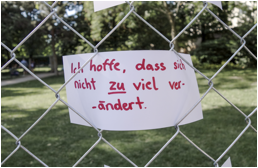
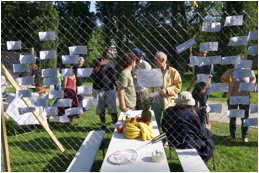

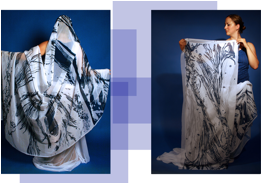
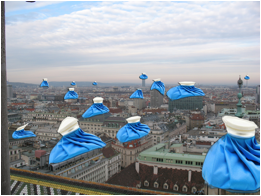

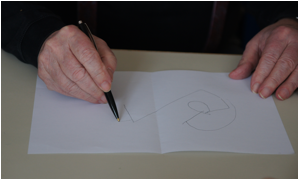
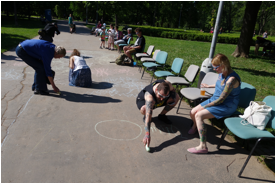
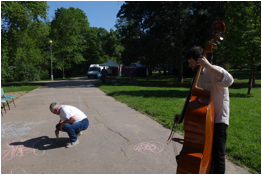



Comments